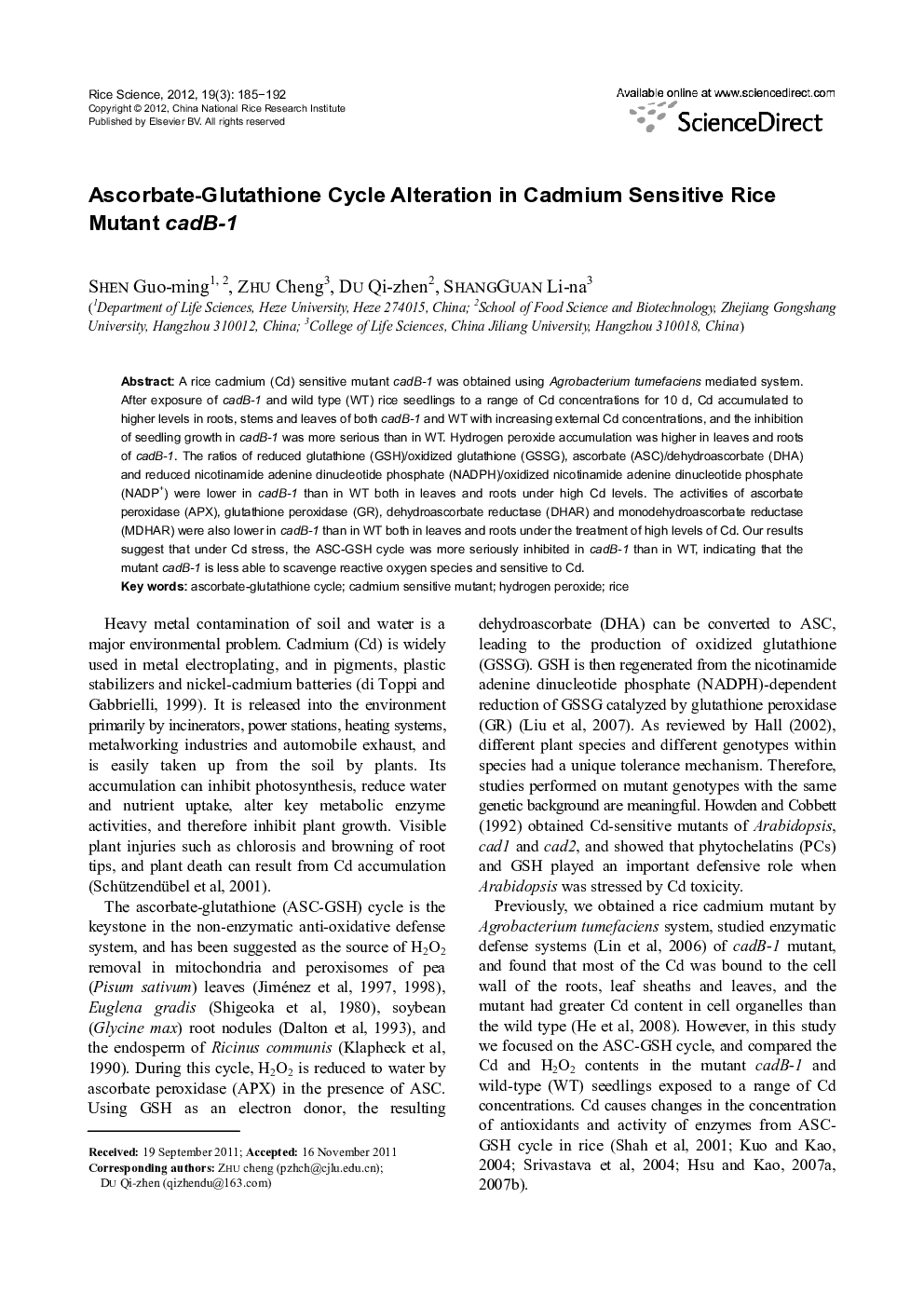| Article ID | Journal | Published Year | Pages | File Type |
|---|---|---|---|---|
| 4502041 | Rice Science | 2012 | 8 Pages |
Abstract
A rice cadmium (Cd) sensitive mutant cadB-1 was obtained using Agrobacterium tumefaciens mediated system. After exposure of cadB-1 and wild type (WT) rice seedlings to a range of Cd concentrations for 10 d, Cd accumulated to higher levels in roots, stems and leaves of both cadB-1 and WT with increasing external Cd concentrations, and the inhibition of seedling growth in cadB-1 was more serious than in WT. Hydrogen peroxide accumulation was higher in leaves and roots of cadB-1. The ratios of reduced glutathione (GSH)/oxidized glutathione (GSSG), ascorbate (ASC)/dehydroascorbate (DHA) and reduced nicotinamide adenine dinucleotide phosphate (NADPH)/oxidized nicotinamide adenine dinucleotide phosphate (NADP+) were lower in cadB-1 than in WT both in leaves and roots under high Cd levels. The activities of ascorbate peroxidase (APX), glutathione peroxidase (GR), dehydroascorbate reductase (DHAR) and monodehydroascorbate reductase (MDHAR) were also lower in cadB-1 than in WT both in leaves and roots under the treatment of high levels of Cd. Our results suggest that under Cd stress, the ASC-GSH cycle was more seriously inhibited in cadB-1 than in WT, indicating that the mutant cadB-1 is less able to scavenge reactive oxygen species and sensitive to Cd.
Related Topics
Life Sciences
Agricultural and Biological Sciences
Agricultural and Biological Sciences (General)
Authors
Guo-ming SHEN, Cheng ZHU, Qi-zhen DU, Li-na SHANGGUAN,
